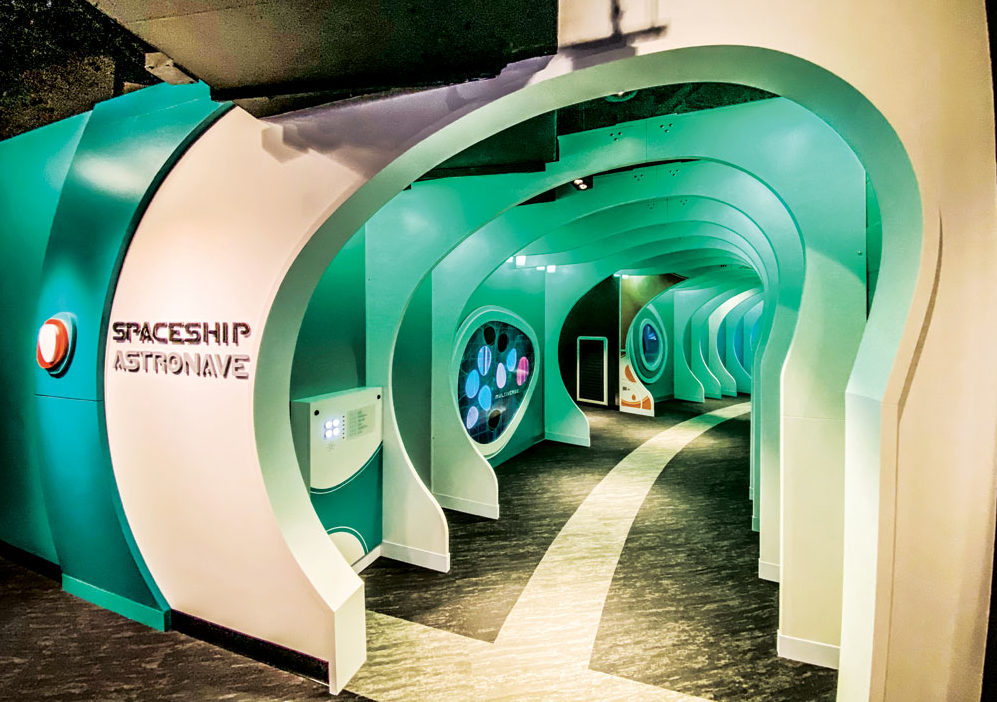
Future astronauts can explore space at the new Space Odyssey at the Museum of Nature and Science. Above, the entrance to a fantasy spaceship where visitors will find secret codes to command the ship.
“This era of big data is an incredible time to be studying about space,” says Naomi Pequette, an astrophysicist and co-designer of the renovated Space Odyssey exhibit at Denver’s Museum of Nature and Science. Noting the advances in robotic missions and high-resolution images of far-away objects, she adds, “We can see a black hole in detail now.”
— CLICK HERE TO WATCH A VIDEO OF SPACE ODYSSEY REIMAGINED —

The Manned Maneuvering Unit that Colorado astronaut Bruce McCandless II wore for the first untethered space walk in 1984. Using jet thrusters to move around in space, he traveled more than 300 feet away from the space shuttle Challenger.
The original Space Odyssey, opened in 2003, has been expanded and updated to include the new tools used by science and aerospace professionals. “The world is a different place than it was 17 years ago,” says Pequette. “The folks in 2003 would be blown away.”
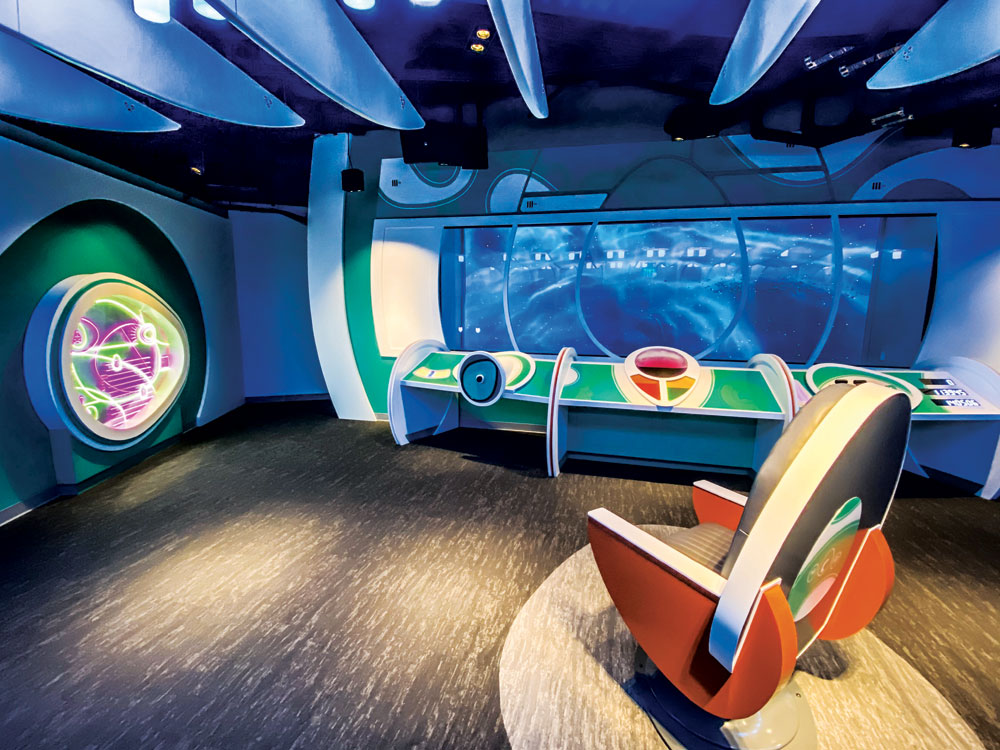
Visitors can control a fantasy spaceship from the captain’s chair, including launching into hyperdrive and blasting asteroids with a laser cannon. Other interactives include a 20 questions game to try to outsmart the ship’s computer.
Community Input Drove Content
The new Space Odyssey is big on interactive and sensory experiences for visitors, with activities like programming a Mars rover and taking a (super quiet!) spacewalk among the stars. Much of the content was driven by input from various groups. “We surveyed adults, families with kids, and our aerospace and science partners. We also got input from communities that don’t typically visit,” Pequette says. “People said they want to be the scientists, to learn and discover on their own. Making your own discovery gives it more meaning. So, we put guests in the role of scientists and engineers.
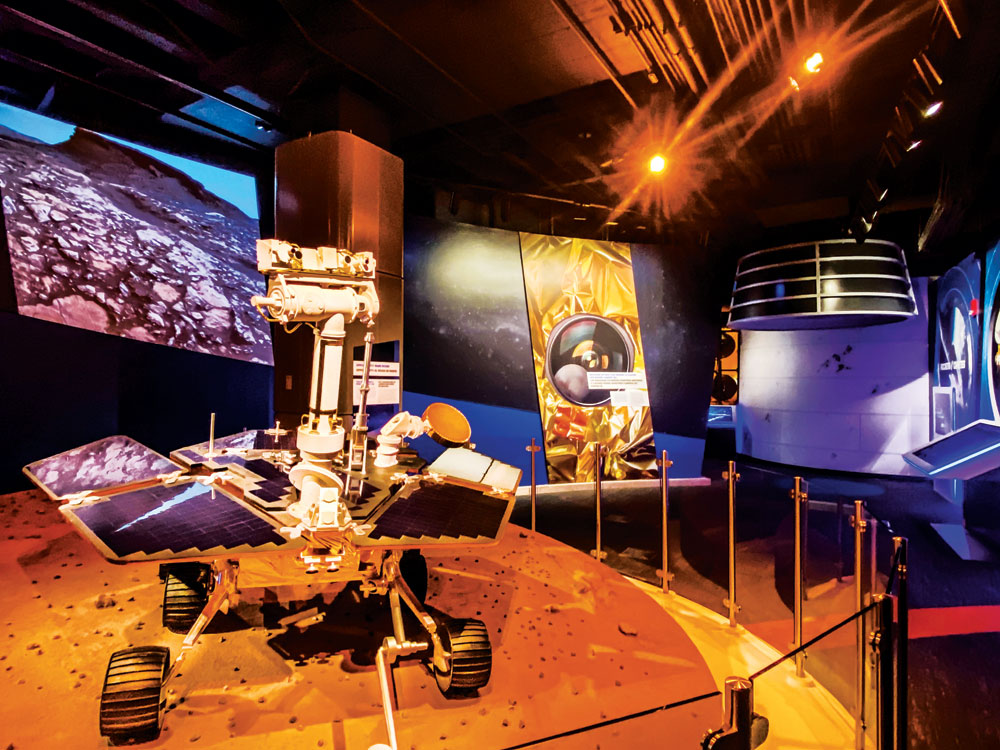
Visitors can program a Rover robot in a Mars landscape to move and perform analysis of the surface materials. Thanks to the Rover missions, scientists have evidence of water and active volcanoes on Mars. A displayed meteorite is known to be Martian because of its chemical composition.
“Also, people wanted to know what it feels like to be in space: full-body experiences to engage both their brains and bodies.”
“How do we know what we know about space?” is the theme of the renovated exhibit. Visitors explore “knowledge orbits,” beginning with Human Wonder: We Learn by Imagining What’s Out There. Here, guests gather around a campfire to hear Indigenous stories about the origins of the night sky. The four stories come from the Skidi Pawnee and the Cochiti Pueblo traditions, as well as Chinese and Aztec cultural knowledge.
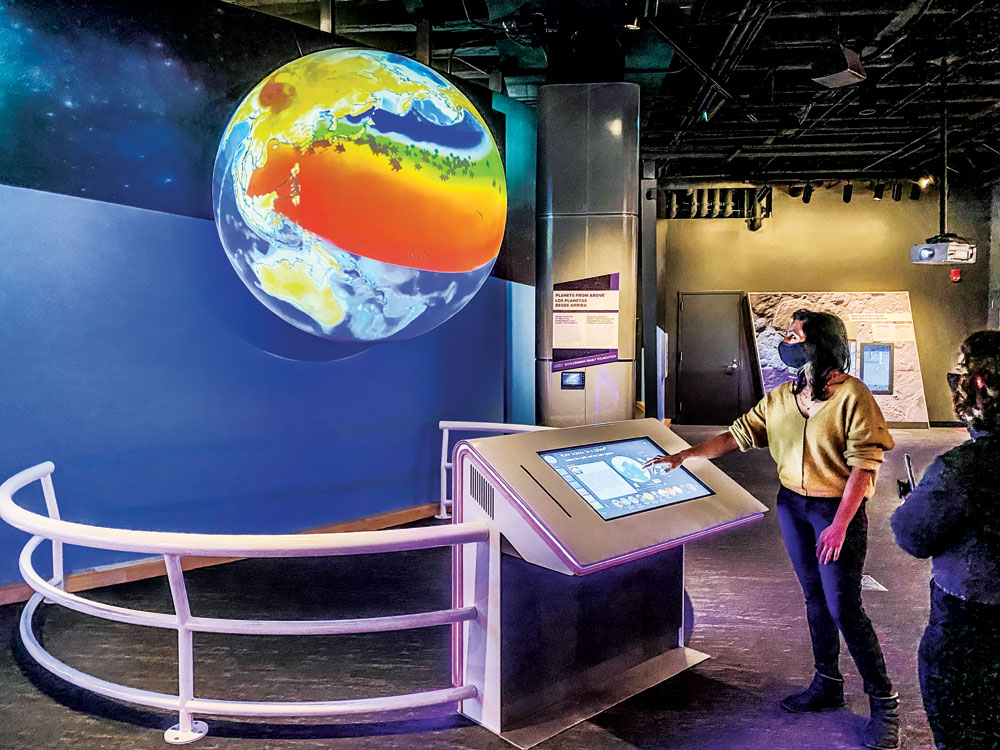
Guests control Science on a Sphere, showing real satellite images of Earth provided by the National Oceanic and Atmospheric Administration. Images show weather patterns, water movement, temperature and climate change over time. NOAA provides thousands of datasets that also include other planets in our solar system and beyond.
Observing space from Earth led scientists to use light as a measurement tool. By measuring brightness, we know how big bodies are and how far away. “Everything we know about space is grounded in light,” says Pequette. “We observe the universe in multiple wavelengths of light.”
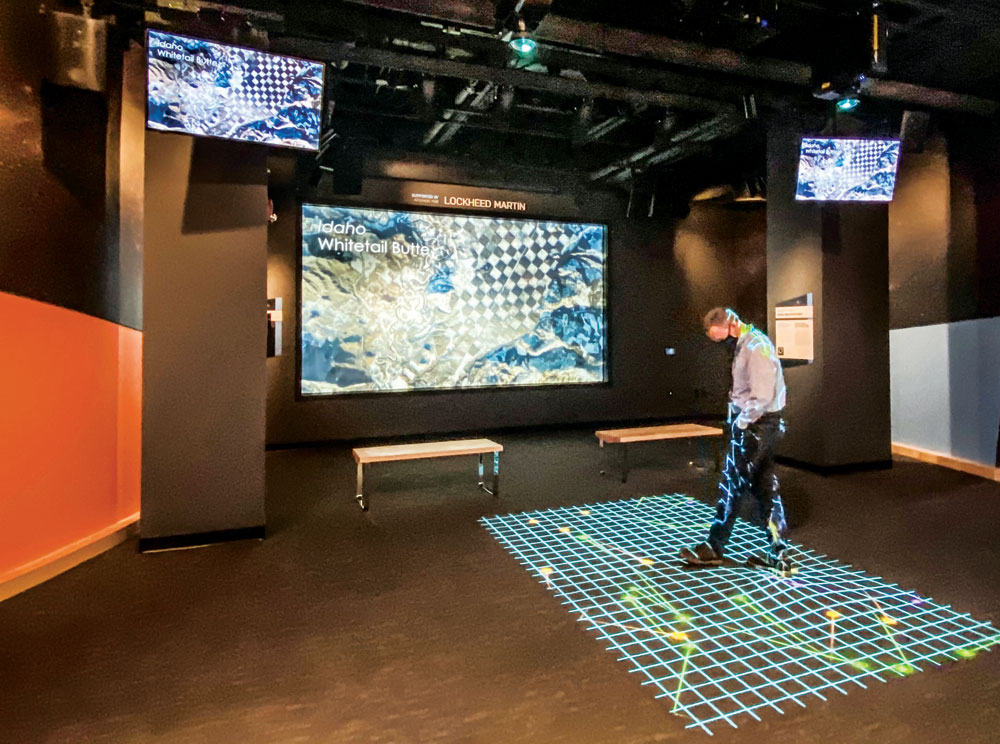
An interactive allows visitors to bend and warp space time with their bodies. Like a trampoline, more weight causes more of an effect.
Guests can get an infrared “tattoo” from a camera that detects heat levels. “The interactive illustrates how we piece together information from different parts of the spectrum of light,” Pequette says.
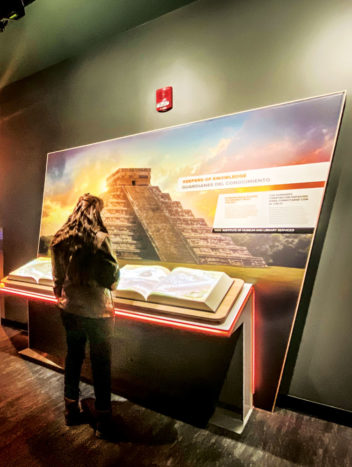
Ancient connections with the skies: The Pyramid of Kukulcán at Chichén Itzá in Mexico marks the equinoxes with a pattern of light resembling the Mayan serpent god Kukulcán.
The Edge of the Known Universe
The Scale of the Universe interactive is a brain-stretching activity that shows the vastness of the universe. “You get an idea of scale,” Pequette says. “How big is thousands of light-years? Zooming in and out from Earth gives you a better context of huge numbers. It zooms out to the edge of the universe, as far as we can see. The universe is observable to 13 billion light-years away—that’s a lot of light-years!”
Strapping into the Virtual Reality Transporter is a visceral, full-body experience for would-be space travelers. “Guests get 360-degree visuals and can feel the movement of the ship. It feels like you’re in a spaceship,” says Pequette. The virtual reality transporter requires a separate ticket.
The multisensory rocket launch pad puts visitors underneath the nozzle of a rocket as it launches from Earth. “You experience the sound and feel the rumble, while watching a rocket take off on a screen. You’re closer than you’d ever get at a launch.”
The redesigned Astrotots section for visitors age 5 and under, now closed for Covid-19 safety, will allow youngsters to explore and play as astronauts.
“We hope visitors walk away having had a ‘Wow!’ moment and realizing that science is fun for everyone,” says Pequette.
Front Porch photos by Christie Gosch


0 Comments